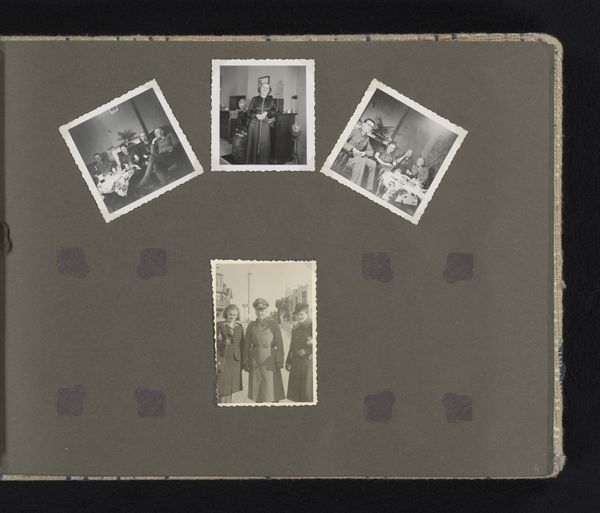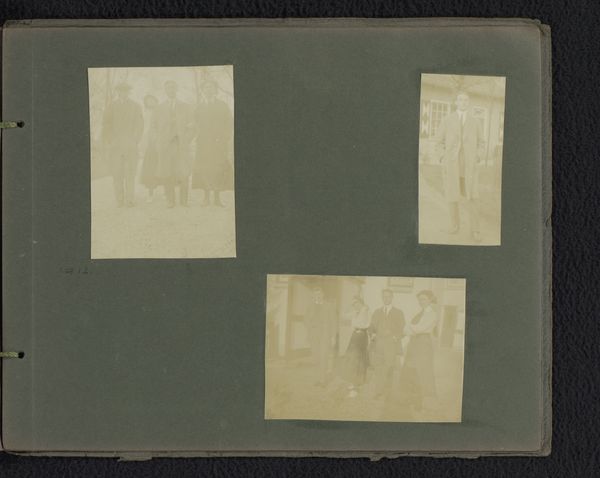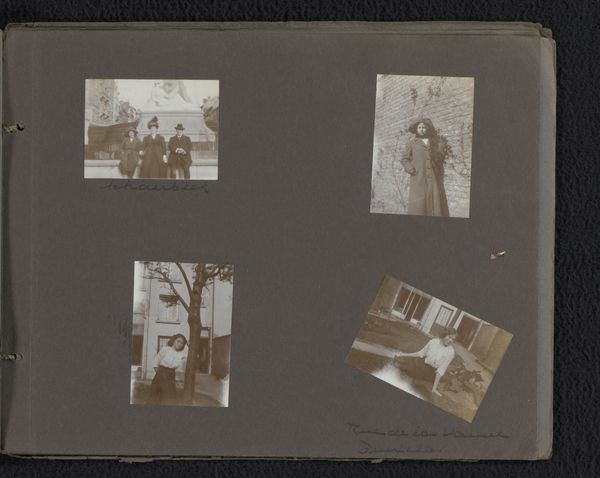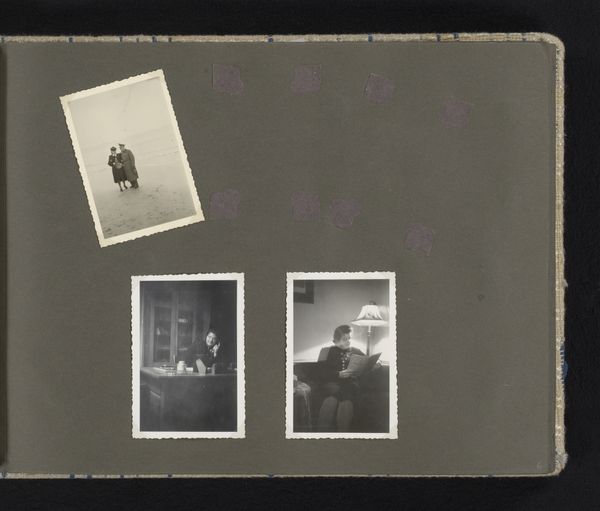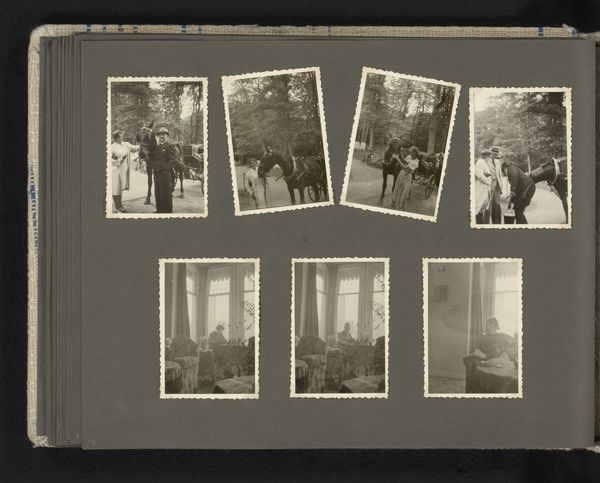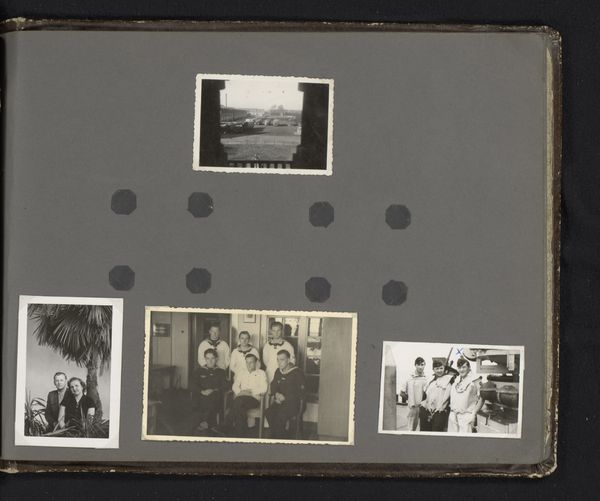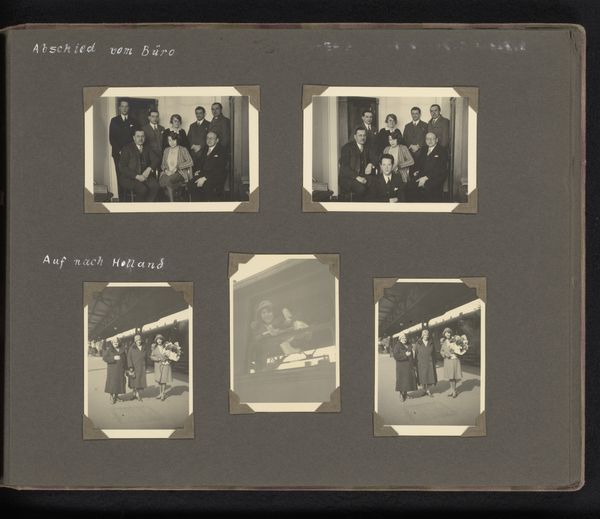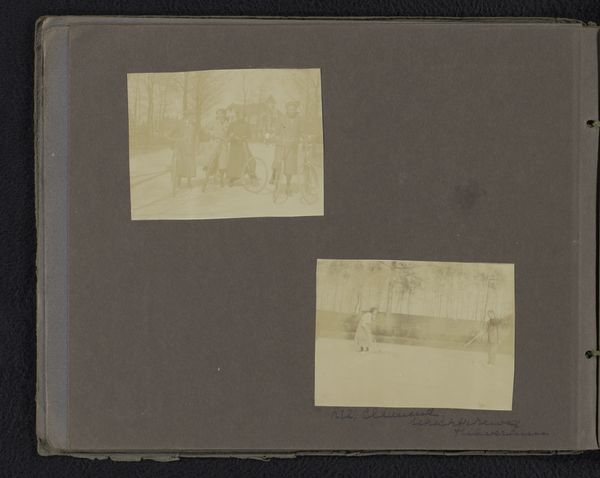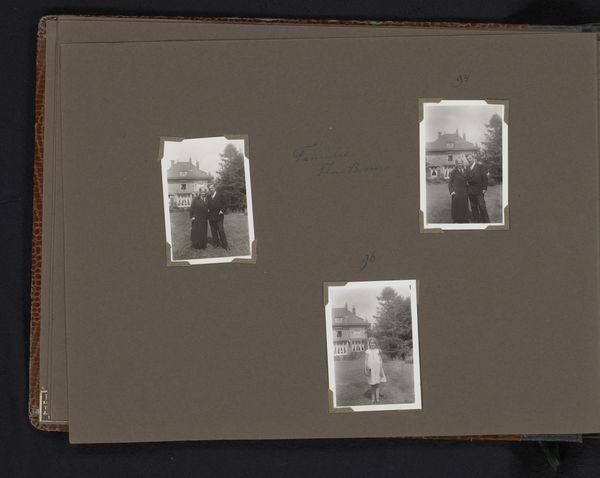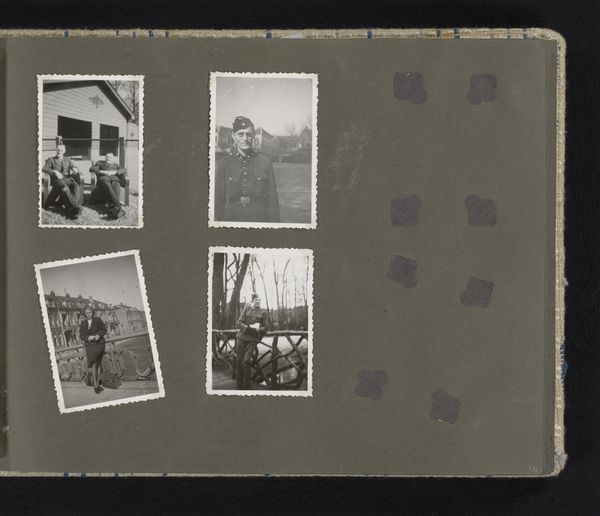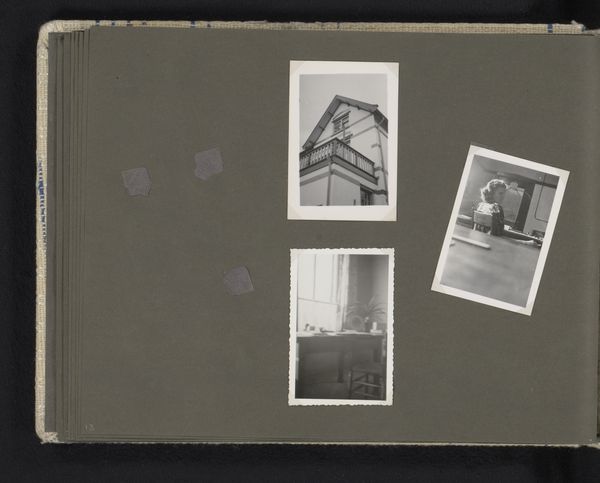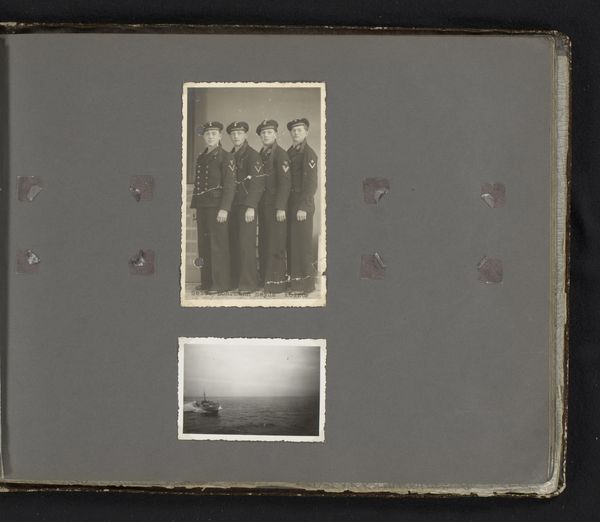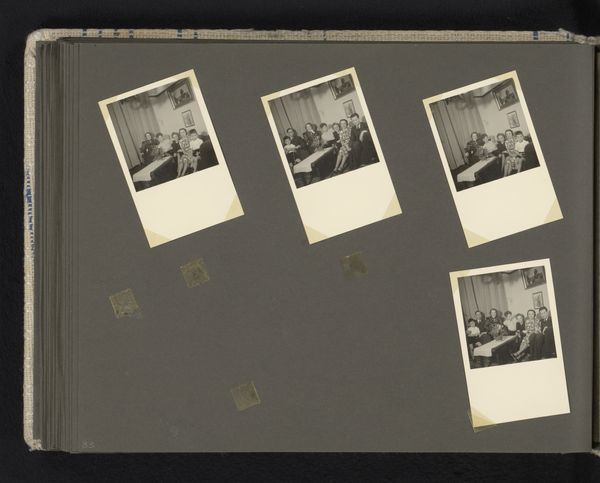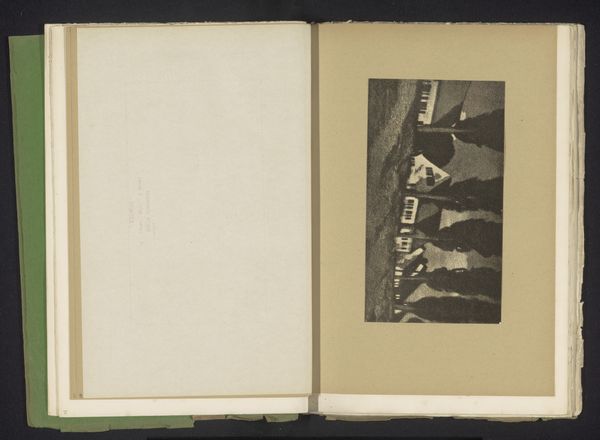
photography, gelatin-silver-print, albumen-print
#
portrait
#
landscape
#
street-photography
#
photography
#
gelatin-silver-print
#
albumen-print
Dimensions: height 85 mm, width 60 mm, height 245 mm, width 310 mm
Copyright: Rijks Museum: Open Domain
Curator: Looking at these gelatin silver prints titled "Strand" taken between 1941 and 1942, I am immediately struck by the contrasting scenes: the harsh exposure, figures that are sharply contrasted by light and dark values, almost stark and isolating. Editor: Indeed. As someone concerned with materiality and production, the albumen and gelatin silver print method immediately informs my understanding. The chemical process central to their making— the layering of emulsion, the silver reacting to light. It tells us about how these pictures came into being, offering evidence of the photographer’s labor and darkroom practice. Curator: I concur, though, the photographer, anonymous here at the Rijksmuseum, showcases excellent control over light and composition across the prints. The way figures interact with the urban and natural environments evokes a certain psychological mood. The contrasts aren’t just tonal; there’s an emotional quality in how the scenes are framed, drawing you into a somewhat unsettling reality. Editor: The material qualities do shape that reality; the very act of creating such photographs during wartime speaks volumes. Resource limitations, access to materials— these constraints inevitably influenced the artist's creative process. The scale too is noteworthy - these feel like remnants, keepsakes… traces of lives lived during immense upheaval. The act of archiving and preserving these images is an assertion. Curator: Yes. Semiotically, we can also deconstruct each print as a system of signs pointing to larger societal themes—the encroachment of the built environment upon nature; people caught between roles as inhabitants of space as well as actors contributing toward the composition of said places… The recurring themes of anonymity are heightened by a shared desolation through contrast. It's all quite striking. Editor: These details open questions around labor— Who are these people depicted? How do socio-economic classes interact with photographic creation and access to it during this time period? The production of an image such as these is inevitably connected to prevailing conditions… These pieces are quiet revolutions in capturing what’s left amidst uncertainty. Curator: I see your point; each photograph then serves as more than just an aesthetic composition but also an inadvertent, raw recording of labor in that slice of time and history. Editor: Precisely. Examining this ‘Strand’ collection compels a view to the unseen, the often overlooked forces driving their origin beyond the lens— leading back to real human struggles, innovations. Curator: An engaging exchange… it enriches a critical perspective about these collected street photography relics through this process of synthesis. Editor: Exactly—it reveals how the choices in materiality and composition interweave and become profound.
Comments
No comments
Be the first to comment and join the conversation on the ultimate creative platform.
